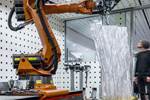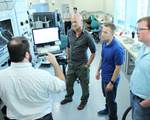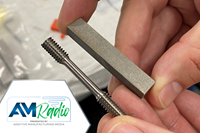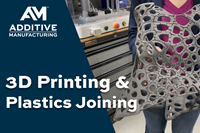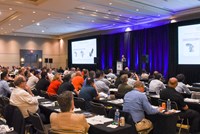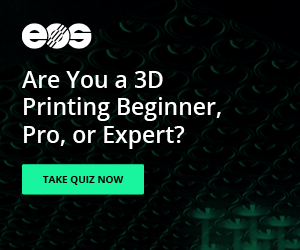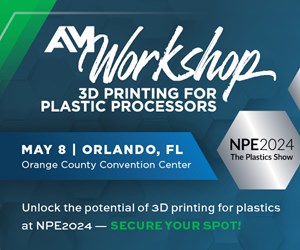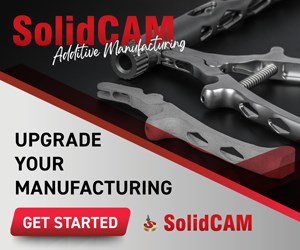Digital Alloys Seeks the Economic Win for Joule 3D Printing
The company is targeting applications where its wire-based deposition technology can win out over conventional manufacturing.
While additive manufacturing (AM) via wire deposition is known to be a viable option for building large structures, Digital Alloys’ Joule Printing technology makes wire-based metal 3D printing practical for smaller parts. The company’s first Joule 3D printers are designed for parts in the size range of a baseball to a beachball. “That’s our sweet spot,” says Duncan McCallum, CEO.
Though Digital Alloys is less than two years old, the Joule technology has been in development for four. This high-speed metal 3D printing process uses a precision motion system to deposit welding wire. The system pushes current through the wire to melt its tip via resistive heating (in other words, Joule heating), forming an electric circuit through the wire and part. The wire position and applied heat can be measured and manipulated through software, creating a closed-loop process.
Because Joule Printing relies on resistive heating, it limits residual stresses in the parts and produces less total heat than other processes. Powder-bed fusion systems have a “thermodynamic speed limit,” McCallum says, based on how slowly heat moves through the powder. In contrast, Joule Printing heats the wire from within, supporting metal 3D printing at faster speeds.
A key advantage Digital Alloys sees in this process is material flexibility. Joule Printing works with any metal wire, McCallum says; the initial materials supported are tool steel and titanium. Machining parts from hard-to-cut metals such as these results in costly scrap, long machining times, and increased wear on tools and machines. Joule 3D printing can be used as a near-net alternative to castings, forgings or stock, limiting the amount of machining required and reducing wear and scrap. The company says it can save as much as 50 percent of the cost of a conventionally produced part.
One example of such an economic win is illustrated by the titanium spring pictured above, produced for MOOG for a satellite application. Machining the long slot through the center of the part would mean a substantial amount of scrap and lengthy machining time. By having Digital Alloys 3D print the near-net form with the slot left open, MOOG can skip straight to finish machining, saving time and money.
Digital Alloys expects to deliver printers to customers by the end of 2020, but is currently focused on providing parts manufacturing services to customers in the aerospace, automotive, consumer, and oil and gas industries. “Today we only work on applications where we can cut the costs of conventional manufacturing,” McCallum says. For now that means printing high-value parts using difficult-to-machine materials, but in the future, he expects that other applications, such as spare parts, will be areas of growth for the Joule Printing process.
Related Content
-
Why AM Leads to Internal Production for Collins Aerospace (Includes Video)
A new Charlotte-area center will provide additive manufacturing expertise and production capacity for Collins business units based across the country, allowing the company to guard proprietary design and process details that are often part of AM.
-
New Zeda Additive Manufacturing Factory in Ohio Will Serve Medical, Military and Aerospace Production
Site providing laser powder bed fusion as well as machining and other postprocessing will open in late 2023, and will employ over 100. Chief technology officer Greg Morris sees economic and personnel advantages of serving different markets from a single AM facility.
-
Aircraft Engine MRO: How Additive Manufacturing Plus Robotic Finishing Will Expand Capacity for Blade Repair
AM offers the chance to bring fast, automated processing to individualized, part-by-part restoration of turbomachinery. A cell developed by Acme Manufacturing and Optomec is able to automatically repair 85,000 unique aircraft engine blades per year.

.jpg;width=70;height=70;mode=crop)

